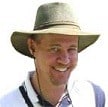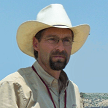-
Asked by Happy soyee to Alex, Ana, Clay, Keegan, Mark on 26 Apr 2016.0
Question: Are you trying to make the world a better place.
- Keywords:
-
Mark Ritchie answered on 26 Apr 2016:
I’m so glad you asked! As part of my research, we are reaching out to local people in drier areas of Kenya who make their living raising livestock to help them manage their animals in more sustainable ways. In the past, they began to live in only one place so their kids could go to school and get medical care, but this led to them grazing their animals over the same areas month after month, to the extent that most of the plants their livestock eat have died, leaving bare ground. The key is to get them to graze areas once and then move on, allowing the grass and other plants to regrow and make seed, all while living near schools and doctors’ offices and hospitals.
What we discovered in our research in Serengeti National Park is that if they do move their livestock around more, this leads to healthier plants, more and deeper roots, and more organic matter in the soil. (Three cheers for soil science!!). The REALLY cool thing is that more organic matter in the soil means that carbon dioxide, a greenhouse gas that is warming the earth, is being moved from the atmosphere to the soil. We are working to make it possible for these very poor people to earn carbon credits for their efforts in managing their animals and sell them to companies in industrialized countries that need to reduce the amount of greenhouse gases they emit.
And that’s not all – increasing soil organic matter also increases the soil’s capacity to absorb and hold water, which allows plants to be green even during dry periods. This means that cows can produce milk all during the year. Improving soil also allows wildlife to prosper, and in Kenya, people can benefit from tourists visiting wildlife!
To sum it up, we have found ways that people can improve soil without having to change very much, and this leads to win, win, win, win(!!) in the fight against poverty, global warming, loss of biodiversity, and the loss of fresh water.
-
Alexander Taylor answered on 26 Apr 2016:
Definitely! For example, yesterday I visited a local elementary to talk about endangered species and habitat loss, and I try to do that kind of thing as often as possible. I mentor the college students I teach, and the ones who volunteer in my lab.
I also hope that my research will help the world one day by improving agriculture, but this gets at a deeper question. The kind of research I do is called “basic science,” as opposed to “applied science.” Basic science is about figuring out how something (in my case, nodulation) works, while applied science is about figuring out how to put that knowledge to work to improve people’s lives. Applied research often seems more directly helpful to people, but without the knowledge gained from basic research, we wouldn’t have the starting information needed to make the inventions that help people.
I study how the plant-bacteria symbiosis called nodulation evolved, which seems at first like a curious question with no useful application. But the knowledge I publish from that research could be used by applied researchers to make non-nodulating crops like apples or strawberries into nodulators. If these crops could nodulate, they could be more nutritious because they’d have more protein. Also, farmers wouldn’t need to give them as much fertilizer, which would make them cheaper and also prevent polluting fertilizer runoff. So we’d end up with cheaper, more nutritious apples, with less damage to the environment. But in order to make nodulating apples, first we need to figure out what genes a plant needs in order to nodulate, and that’s where my research is useful.
A lot of basic researchers seem to be studying things that have no relevance or importance to people’s lives, like the genes that make fruit flies eyes a certain color or what happens if you smash two atoms together. But the way these basic scientists build knowledge about the world can be very helpful down the road, sometimes in surprising ways. You need to have a basic understanding of how something works before you start to tinker with it!
-
Clay Robinson answered on 26 Apr 2016:
In a word, “Yes!”
Soil is
– the foundation of every ecosystem and absolutely necessary to sustain life by providing food, fiber, and lumber to feed, clothe, and shelter the ever-increasing number of people on the planet (>7.8 billion and counting) (For more information, see https://www.youtube.com/watch?v=iavK9ga4UpM.);
– a threatened, slowly-renewable (not in our lifetime) natural resource because of desertification, acidification, salinization, sodification, erosion, and ever-expanding human activity (roads, housing developments, shopping malls, industry, and the like), most of which are natural processes that may be accelerated by human activities; and
– an important component in the hydrologic cycle that either can contribute to water pollution, or can be an integral component in cleaning water because of the physical, chemical, and biological filtering properties of soil.As such, every hectare of arable land (land that can be used to produce crops) will be required to produce more and more food, since there will be more and more people and less and less available land – the best land for producing food is also the best land for urban and commercial development. For more about why the limitations on arable land exist, see https://www.youtube.com/watch?v=mA78nPn41F4. This is also why people are cutting down forests – to have more available land to produce food, though the forested soils in the tropics are very fragile and difficult to manage and maintain productivity. But do not be too harsh on them, Americans did the same thing in the 1800s as they moved west and clear-cut the temperate, deciduous forests in most of Ohio and parts of western Pennsylvania, Tennessee, and Kentucky, Missouri, and Arkansas, and most of the temperate rainforests in California and Oregon, in addition to draining most of the wetlands in the Midwestern United States which is now known as the Corn Belt and sometimes called the Breadbasket of the Nation.
And so I teach people how to conserve soil and water resources when they grow crops to produce and fiber. I also teach people how to reclaim and manage soils that have been damaged by natural processes or by human activities.
The planet is ours, and we are its stewards; we need to think about how to leave it in good condition with the ability to provide for future generations.
Related Questions
Recent Questions
-
What are the pros and cons of your profession?
-
How do you determine how old soil is? Knowing the different interactions it has with time, climate, and living
-
What is your favorite thing about being an environmental scientist?
-
Growing up and today included, do/did you have any pets?
-
how long was the longest worm u have ever found
Recent Comments
-
And the winner is… (1 comment)
-
The first scientist eliminated is… (2 comments)
-
If plastic-eating bacteria were released, how drastic do you think the effect would be? (1 comment)
-
Who is Your Role Model? (2 comments)
-
In order to become an environmental engineer did you get a bachelors degree in engineering? (1 comment)






Comments